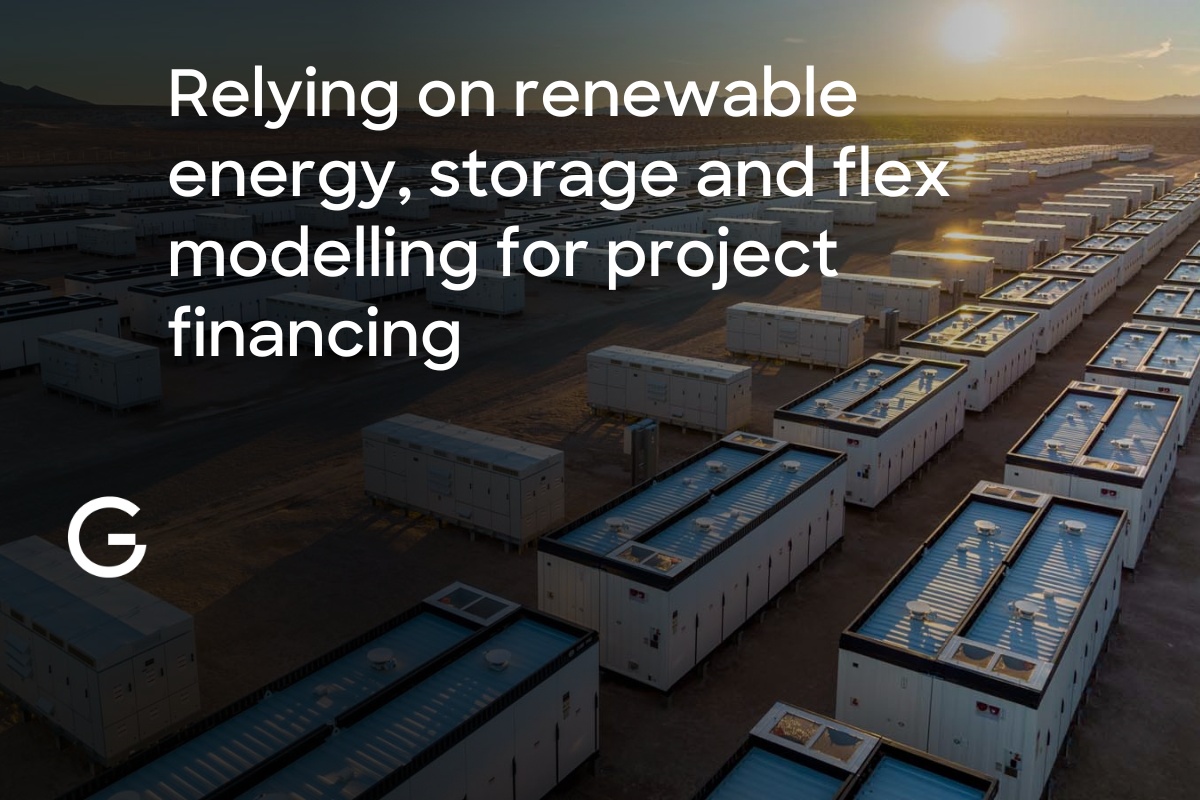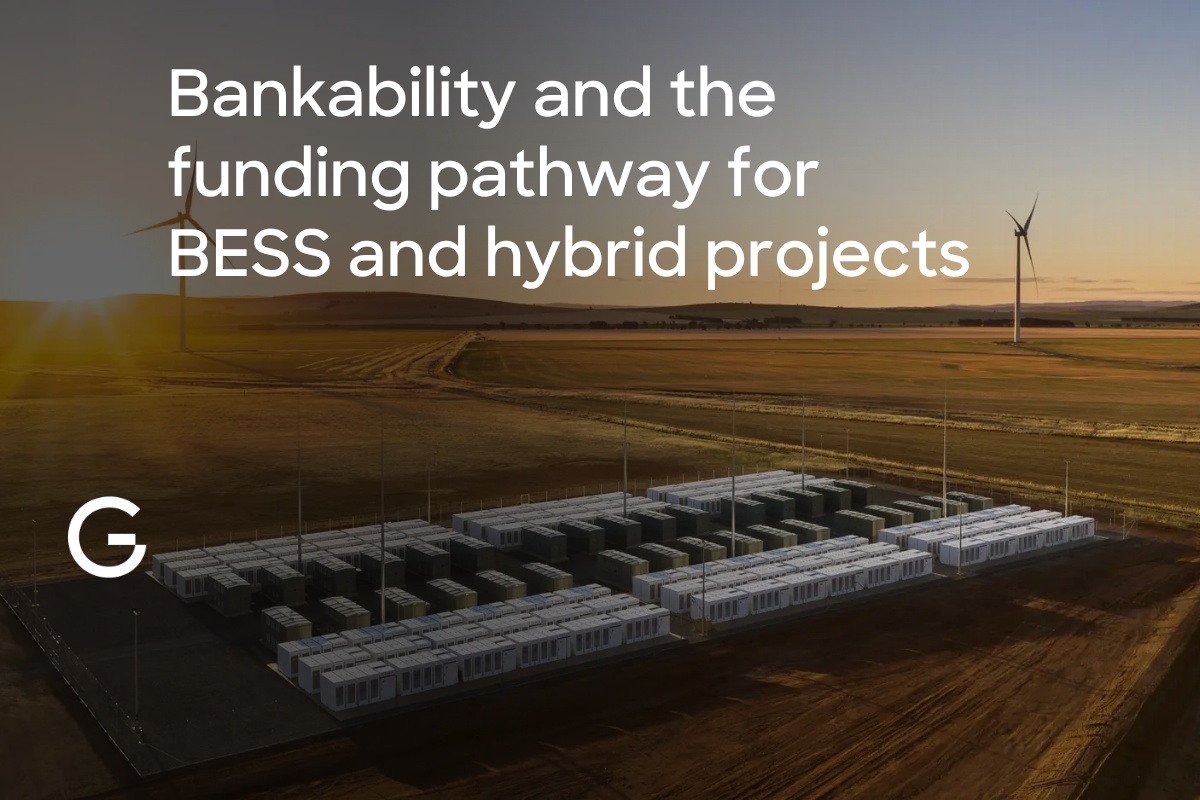Modelling a Behind-the-Meter Power Purchase Agreement in Gridcog

Behind-the-meter Power Purchase Agreements (PPAs) for solar PV are a well established commercial structure. Factors including additional grid connection being hard to secure, additional value streams from flexible assets and desire to be more energy resilient are now driving asset owners and end customers to explore battery storage alongside PV.
At Gridcog, a question we often get asked is, “we have an existing solarPPA on my site, would installing a battery make sense from a financial perspective for both the landlord (acting as the asset owner) and the tenant (acting as the customer) ?”. This blog post will look at why the answer to this question can be more complicated than it may seem and explore a way to use flexibility and optimisation to find win-win solutions for both the landlord and the tenant.
Power Purchase Agreements - PV only:
PPAs are a commercial arrangement between two or more parties. Typically one party will install a generator and sell the energy at a fixed price to the other party, usually at a lower price than what could be procured from the grid. A common scenario is between a landlord and their tenants where the landlord pays for, owns, operates, and maintains a solar PV system and sells the electricity generated from the installation to the tenant. When the tenant pays only for what they use, this is a consumption-based PPA.
Hybrid Power Purchase Agreements - PV and Battery:
Adding a battery changes the PPA from being a standard solar consumption based PPA to being a hybrid (battery and solar) PPA. The intuition is simple, if I can use the excess solar energy not consumed by the load to charge a battery, then surely a battery makes sense to store this energy for use at a later stage when the sun isn’t shining or the price of electricity from the grid is higher. The answer is maybe. In some situations, using a battery to behave in ‘self-consumption’ mode may make sense. For example if you were off grid or had more load than your grid connection could support. But often this is not financially feasible as batteries often need other income streams to yield a positive NPV.
What are these other income streams? Batteries are flexible assets, meaning that based on myriad pricing signals they can charge or discharge making them prime candidates for optimising retail and network tariffs, trading in the wholesale electricity markets, and providing grid ancillary services therefore accessing new revenue streams that cannot be accessed by a solar asset on its own.
Common Challenges with Hybrid behind-the-meter PPAs:
Two questions arise from adding a battery to an existing solar PPA agreement.
- Who pays for what?
- How is this going to be metered?
By adding a battery, the site load may increase to charge the battery. This load then gets added to the energy measured by the PPA. If this energy is discharged back into the site load, the commercial arrangement is relatively simple as all that is being done is time-shifting the PPA. But, using a battery in this ‘self-consumption’ mode is usually not as profitable as using it flexibly to export to the grid.
Determining who should pay for the energy from the grid used to charge the battery and revenue from grid exports is non-trivial since the BESS will be discharging to serve both participants. From the perspective of the landlord, they installed the BESS at their own expense and all energy needs of the tenant are met, so all export revenue should go to them. From the tenant perspective, since the onsite load increased, and they paid for some of the energy that eventually got exported then they should be entitled to some of that income too. Measuring who pays for what is tricky and may require asset-level metering. It gets even more complicated if there is a single supply point for the entire site.
.png)
Modelling hybrid behind-the-meter PPAs in Gridcog:
Fortunately, there are ways to use flexibility and optimisation to simplify this commercial structure, creating a win-win scenario for both participants. We ran a model in Gridcog to explore this in more detail. The project structure works as follows:
- The site is a small data centre based in South East England with an annual consumption of c. 2.2MWh and a peak demand of 330kW. The grid connection constraint is a 1300kW symmetric import/export restriction.
- The project was simulated for 25 years with a 3000kWp solar system and a 2000kWh, 2-hour duration battery.
- The tenant is on a flexible bundled (includes the network charges) retail tariff that follows the day-ahead hourly price. The retail tariff also includes a supply charge and a flat energy rate on top of the day-ahead passthrough rate.
- The landlord pays for the installation of the solar PV and BESS.
- There is a consumption based PPA (15p/kWh) between the landlord and tenant, excess solar is sold at the Day Ahead price.
- The tenant pays for the excess solar energy used to charge the battery once the load needs have been met. The tenant also pays for energy from the grid that charges the battery.
- The battery discharges into the load in lieu of grid electricity when it is economically optimal – saving the tenant money.
- The battery trades in wholesale and ancillary service markets making money for the landlord (mimicking potential additional revenue opportunities available via P415), when it is economically optimal to do so.
- The project is run for 25 years

The first scenario shows the site with a 3000kWp solar PV array with no BESS. The second scenario shows what happens if a 2000kWh, 2 hour optimised BESS is added to the site. Ancillary services shown by the purple segment in the second scenario is a new revenue stream accessible to the landlord which cannot be realised by a solar PV system on its own. The BESS also maximises the export revenue for the landlord. For the tenant, the BESS minimises the wholesale energy and retail supply costs.
The above scenario only works because the battery is optimised (i.e. via a smart control system that responds to price signals). It only draws energy from the grid when the price is low, and it discharges into the load when the price is high. So rather than only focusing on the volumes of energy bought and sold, in this model we are also concerned with the price of the energy. It is this flexibility that allows both the landlord and the tenant to win. A battery makes sense with the attributions of this site. There may, of course, be other scenarios where a battery does not make financial sense which is an equally valuable insight to modelling these PPA commercial arrangements.
The purpose of this blog is not to present a one-stop solution to every hybrid behind-the-meter PPA. Rather, it is to illustrate the value of modelling problems to potentially find win-win solutions in scenarios where there is an opportunity to optimise your onsite assets to work for multiple participants. Often, the difficulty in developing projects relates to developing a sensible commercial structure rather than the technical limitations imposed by the technology.
Gridcog can be used to prototype different commercial structures relating to PPA agreements for behind-the-meter assets. If you would like to learn more about Gridcog click here to book a demo and reach out to our team.







